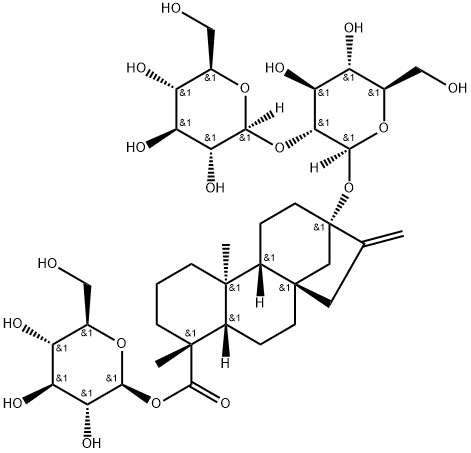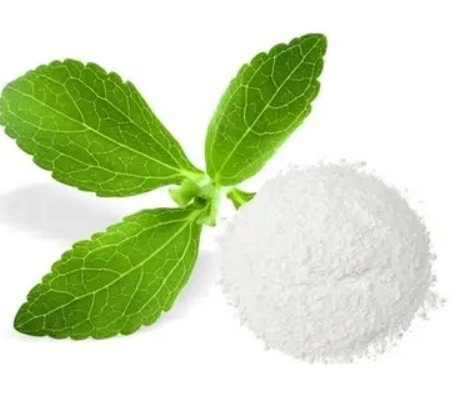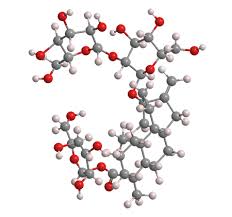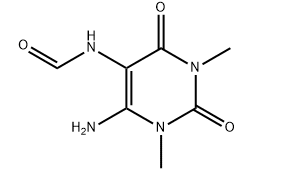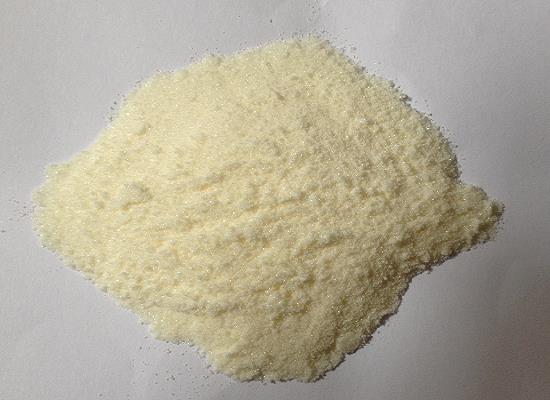Stevioside: biosynthesis, metabolism and safety
General Description
Stevioside, a natural sweetener derived from the Stevia plant, is synthesized through the 2-C-Methyl-d-erythritol-4-phosphate pathway (MEP pathway). Key enzymes in this pathway, such as DXS and DXR, are responsible for steviol production. The biosynthesis of stevioside differs from gibberellins. Stevioside metabolism occurs in animals, with gut bacteria breaking it down into steviol. The absorption of steviol varies across species, with rats readily absorbing it, while pigs show minimal uptake from the colon. Studies suggest that steviol has a low toxic potential but further research is needed. The acceptable daily intake of Stevia extract is 4 mg/kg body mass.
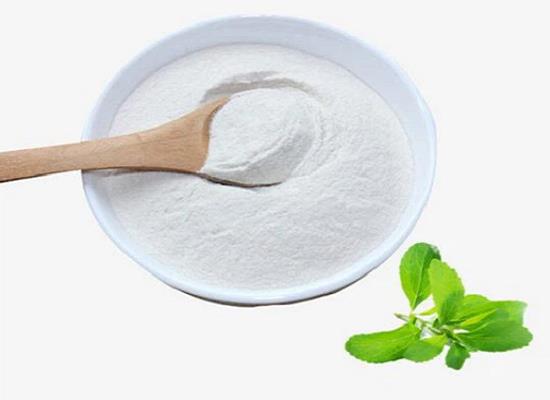
Figure 1. Stevioside
Biosynthesis
The biosynthesis of stevioside, as well as gibberellins (GAs), involves the 2-C-Methyl-d-erythritol-4-phosphate pathway (MEP pathway). The key enzymes in this pathway are 1-deoxy-dxylulose-5-phosphate synthase (DXS) and 1-deoxy-dxylulose-5-phosphate reductoisomerase (DXR). These enzymes have been cloned from Stevia plants and shown to be functional. It has been confirmed that the MEP pathway is primarily responsible for the synthesis of steviol. Previous studies suggested that steviol may be synthesized through the mevalonic acid (MVA) pathway, but recent research using a Stevia leaf cDNA library and expressed sequence tags (ESTs) has provided evidence against the involvement of the MVA pathway. The ESTs identified several candidate genes specific to the MEP pathway, while no members of the MVA pathway were found. Thus, the primary source of isopentenyl pyrophosphate (IPP), which is a precursor for diterpene biosynthesis, is likely the MEP pathway. After the production of kaurenoic acid, the biosynthesis of steviol and GA diverges. While a kaurene oxidase was highly represented among the ESTs, other enzymes involved in GA biosynthesis were not found. In summary, stevioside is synthesized through the MEP pathway, with distinct differences in biosynthesis compared to gibberellins. The regulation of enzyme expression and the spatial-temporal separation of biosynthetic pathways contribute to the unique accumulation patterns observed in Stevia plants. 1
Metabolism
Stevioside, a natural sweetener derived from the Stevia plant, undergoes metabolism in various animal models. In rats and hamsters, stevioside is broken down by gut bacteria in the caecum or colon, leading to the formation of steviol. However, it remains uncertain whether steviol found in the bloodstream is directly absorbed from the colon or indirectly through ingested feces. Experimental studies demonstrate that steviol, a component of stevioside, is readily absorbed by the gastrointestinal tract in rats. Nonetheless, when fed to pigs, although stevioside is entirely converted into steviol in the colon, no detectable levels of steviol are found in the blood. This suggests minimal uptake of steviol from the colon in pigs. Metabolism of steviol in rat liver microsomes is relatively low. Considering the low detection limits of steviol, any hypothetical maximum concentration remaining undetected in pig blood samples would likely be below toxic levels. High doses of steviol administered to hamsters and rats did not exhibit toxic effects in studies. Although species differences may exist, extrapolating findings from rats suggests that plasma concentrations of steviol in hamsters and pigs would not exceed the detection limit, even with potential uptake from the intestines. 2
Safety
Stevioside has been extensively studied and approved for use by various regulatory authorities, including the US Food and Drug Administration and the European Food Safety Authority. These authorities have determined that stevioside is generally recognized as safe for consumption. Numerous studies have indicated that stevioside has a negligible impact on blood glucose levels, making it suitable for individuals with diabetes or those watching their sugar intake. It is also non-cariogenic, meaning it does not contribute to tooth decay. Although stevioside is considered safe for most people, individuals with specific medical conditions or sensitivities may experience side effects such as gastrointestinal discomfort or allergic reactions. It's advisable to consult with a healthcare professional if you have any concerns. Overall, stevioside is a safe and natural alternative sweetener that can be incorporated into a variety of foods and beverages as part of a balanced diet. 3
Reference
1. Geuns JM. Stevioside. Phytochemistry, 2003, 64(5):913-921.
2. Renwick AG, Tarka SM. Microbial hydrolysis of steviol glycosides. Food Chem Toxicol, 2008, 46 Suppl 7:S70-S74.
3. Younes M, Aquilina G, Castle L, Engel KH, Fowler P, Frutos Fernandez MJ, Fürst P, Gürtler R, Gundert-Remy U, Husøy T, Manco M, Mennes W, Passamonti S, Moldeus P, Shah R, Waalkens-Berendsen I, Wölfle D, Wright M, Barat Baviera JM, Degen G, Leblanc JC, Herman L, Giarola A, Aguilera J, Vianello G, Castle L. Safety evaluation of steviol glycoside preparations, including rebaudioside AM, obtained by enzymatic bioconversion of highly purified stevioside and/or rebaudioside A stevia leaf extracts. EFSA J, 2021, 19(8):e06691.
Related articles And Qustion
See also
Lastest Price from Stevioside manufacturers
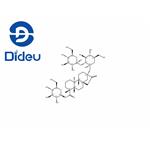
US $0.00/kg2025-09-18
- CAS:
- 57817-89-7
- Min. Order:
- 1kg
- Purity:
- 99%
- Supply Ability:
- 10000KGS

US $0.00-0.00/kgs2025-06-28
- CAS:
- 57817-89-7
- Min. Order:
- 25kgs
- Purity:
- ≥99.0%
- Supply Ability:
- 100 tons
